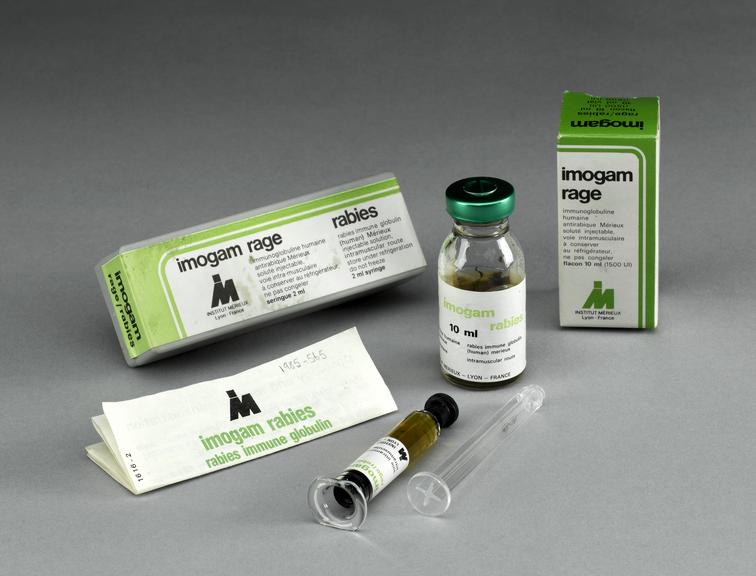Glass bottle of human rabies vaccine, with syringe and instructions, preparation name " Imogam" by Institut Merieux of Lyons, France, c. 1985, supplied by Servier Laboratories U. K.
Rabies is a virus which infects wild and domestic animals. Humans can contract the disease from a bite from a rabid dog or bat or through the saliva of these creatures should it penetrate a cut or scratch on the skin. Once the virus has taken hold in humans rabies is usually fatal unless treated. Vaccines should be injected as soon as possible after exposure as immunity develops after about a week. It is a race against time as rabies reaches the central nervous system in two to six weeks. The first rabies vaccine was developed in 1885 by Louis Pasteur (1822-1895) and Emile Roux (1853-1933). The Institut Mérieux was founded c. 1897 by Pasteur’s assistant Marcel Mérieux (1870-1937) to develop vaccines and reagents in Lyon, France. Today it is a world leader in its field.






